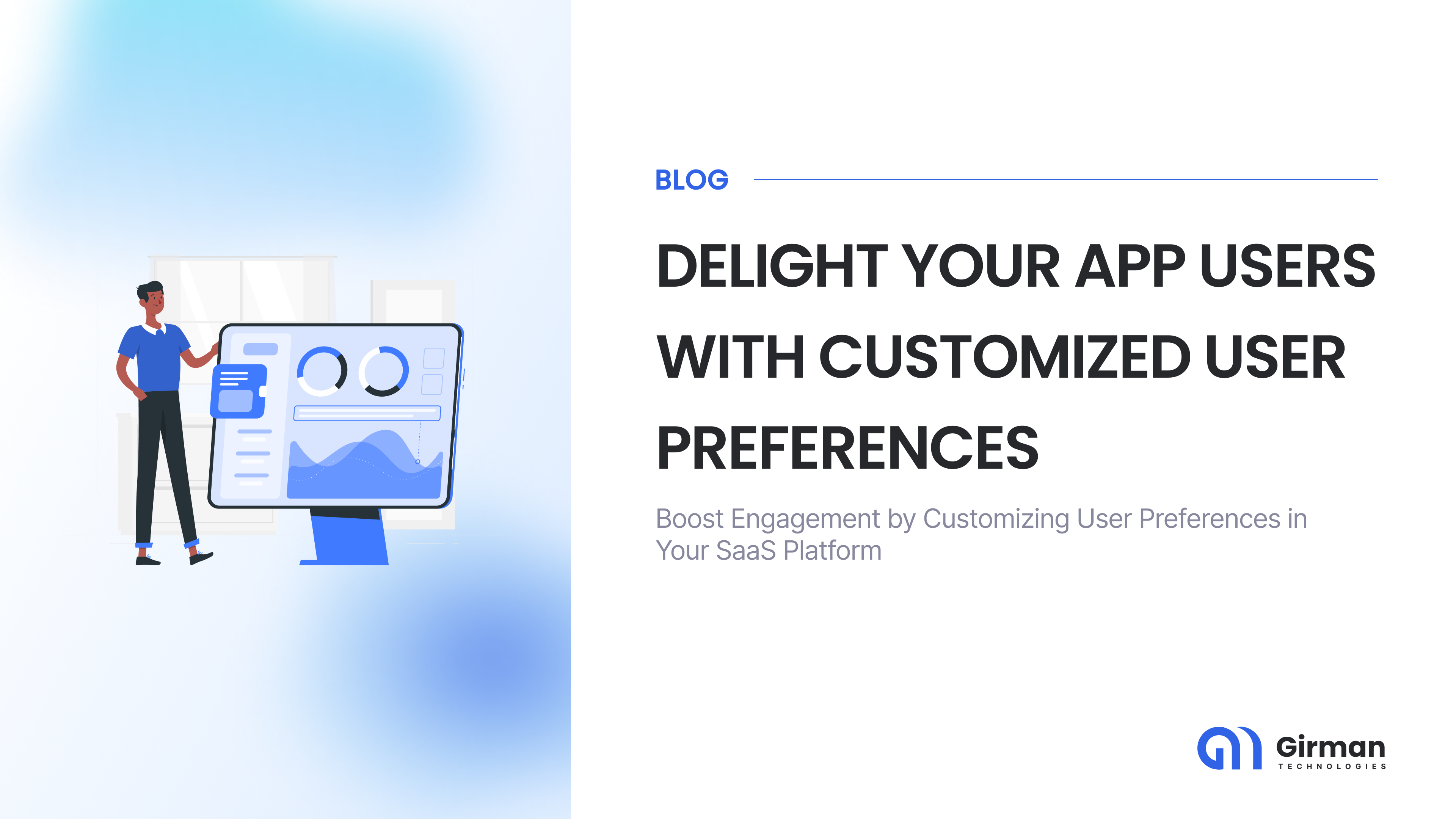Delight Your App Users with Customized User Preferences
 Manish Dipankar
Manish Dipankar
User Preferences can significantly enhance the user experience and tailor the application to individual needs.
Here are the 8 common use cases that can be implemented across various B2B SaaS applications:
1. Dashboard Customization:
Allow users to customize their dashboard layout, widgets, and data visualizations.
Example: Users can choose which metrics to display and how to arrange them on the dashboard.
2. Notification Settings:
Enable users to control the frequency and types of notifications they receive (e.g., email, in-app notifications).
Example: Users can choose to receive notifications for new tasks, completed projects, or important updates.
3. Data Filtering and Sorting:
Provide options for users to filter and sort data based on their preferences.
Example: In a project management tool, users can filter tasks by status, priority, or due date.
4. Language and Locale Settings:
Support multiple languages and allow users to select their preferred language and locale.
Example: Users can switch between English and Spanish in a global SaaS application.
5. Accessibility Settings:
Provide options for users with disabilities, such as larger fonts, high-contrast themes, or screen reader compatibility.
Example: Users can adjust font size, color scheme, and keyboard shortcuts.
6. Dark Mode:
Offer a dark mode option for users who prefer a darker interface. Remember this preference.
Example: Users can switch between light and dark modes for improved readability and visual comfort.
7. Default View Settings:
Allow users to set their preferred default view for lists, tables, or dashboards (e.g., card view, list view, table view).
Let user choose which columns to show and in what order and remember it.
8. Onboarding Guidance:
Monitor the user's progress through the onboarding process and provide reminders or additional support as needed.
Analyze user behavior to identify features that the user has not yet explored.
Suggest features that might be relevant based on the user's role, preferences, and usage patterns.
The SQL to create such a User Preference will look like:
CREATE TABLE user_preference (
id BIGSERIAL PRIMARY KEY, -- Auto-incrementing ID for the table entry
user_id BIGINT NOT NULL, -- ID of the user whose preference is being added
key VARCHAR(255) NOT NULL, -- The string to identify the use case being added/modified
preference JSONB, -- The JSONB field to store the JSON data of the preference.
CONSTRAINT fk_user FOREIGN KEY (user_id) REFERENCES users (id) ON DELETE CASCADE
);
Sample Values for the above 8 use
Here are the appropriate “key” and “preference” values for each of the above use cases:
Dashboard Customization:
Key: "dashboard_layout"
{
"widgets": [
"metric1",
"metric2",
"metric3"
],
"layout": "grid",
"positions": [
{
"metric1": {
"x": 0,
"y": 0
},
"metric2": {
"x": 1,
"y": 0
},
"metric3": {
"x": 0,
"y": 1
}
}
]
}
This preference stores the user's chosen widgets and their positions on the dashboard.
Notification Settings:
Key: "notification_settings"
{
"email_notifications": true,
"in_app_notifications": false,
"frequency": "daily",
"categories": {
"new_tasks": true,
"completed_projects": true,
"important_updates": false
}
}
This stores the user's notification preferences, including types of notifications and frequency.
Data Filtering and Sorting:
Key: "task_filter_sort"
{
"filters": {
"status": "in_progress",
"priority": "high",
"due_date": "next_week"
},
"sort_by": "due_date",
"sort_order": "asc"
}
This stores preferences for filtering and sorting tasks in a project management tool.
Language and Locale Settings:
Key: "language_locale"
{
"language": "en",
"locale": "en_US"
}
This stores the user's selected language and locale.
Accessibility Settings:
Key: "accessibility_settings"
{
"font_size": "large",
"theme": "high_contrast",
"screen_reader": true
}
This stores accessibility preferences, including font size and theme.
Dark Mode:
Key: "dark_mode"
{ "enabled": true}
This stores whether the user has enabled dark mode.
Default View Settings:
Key: "default_view_settings"
{
"view_type": "card",
"columns": [
"name",
"priority",
"status"
],
"column_order": [
"name",
"status",
"priority"
]
}
This stores the user's preferred default view and column order for lists or tables.
Onboarding Guidance:
Key: "onboarding_progress"
{
"completed_steps": [
"step1",
"step2"
],
"pending_steps": [
"step3",
"step4"
],
"suggested_features": [
"featureA",
"featureB"
]
}
This stores the user's onboarding progress and suggested features.
Here is the API contract to fetch the list of UserPreference entries for a user:
API Endpoint:
Lists the preferences of the Logged In user
GET /preferences
Header → Authorization: Bearer <token>
(Required for authentication)
GET /api/user/preferences/ \
-h 'Authorization: Bearer <token>'
Response
{
"preferences": [
{
"id": 1,
"user": 123,
"key": "dashboard_layout",
"preference": {
"widgets": [
"metric1",
"metric2",
"metric3"
],
"layout": "grid",
"positions": [
{
"metric1": {
"x": 0,
"y": 0
},
"metric2": {
"x": 1,
"y": 0
},
"metric3": {
"x": 0,
"y": 1
}
}
]
}
},
{
"id": 2,
"user": 123,
"key": "dark_mode",
"preference": {
"enabled": true
}
},
{
"id": 3,
"user": 123,
"key": "language_locale",
"preference": {
"language": "en",
"locale": "en_US"
}
},
...
...
]
}
Subscribe to my newsletter
Read articles from Manish Dipankar directly inside your inbox. Subscribe to the newsletter, and don't miss out.
Written by
